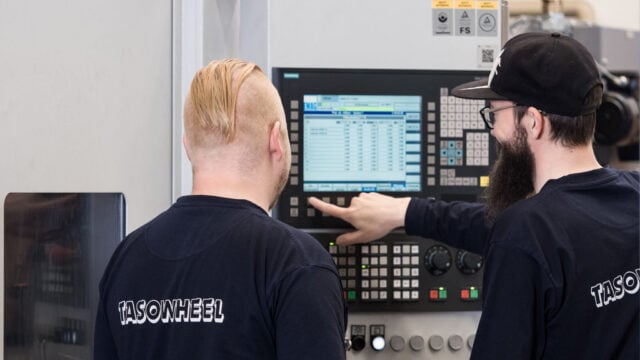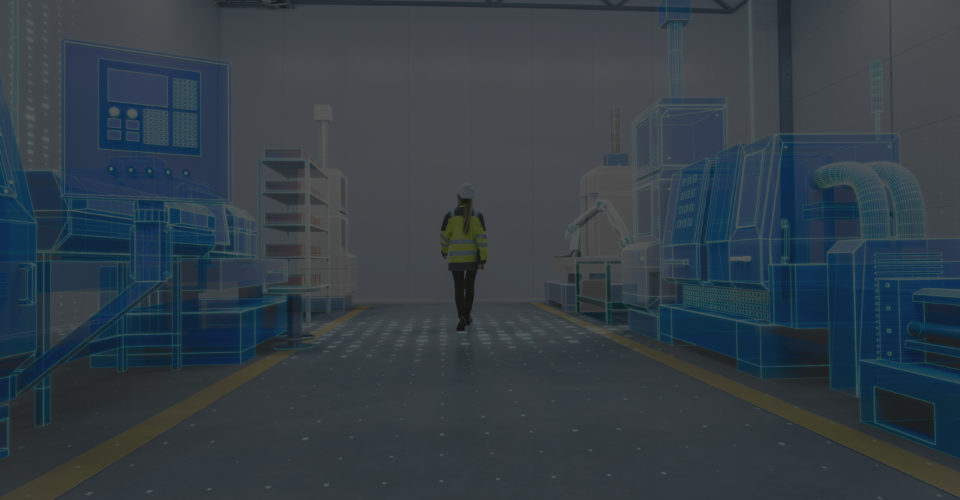
Bringing Transparency and Situational Awareness to The Shopfloor – Factory Cockpit at Tasowheel
Tasowheel is a Finnish family-owned contract manufacturer founded in 1979. The company has established itself as…

We started collecting systematically feedback about situational awareness in manufacturing from our customers in fall 2021. We have talked to our customers in Finland, Germany, Italy, Sweden, UK and USA. Thank you all who have helped us to gather this valuable information and learn about your needs and challenges related to manufacturing situational awareness.
We focus in this blog post on part / component manufacturing information related learnings. The questions we asked are the following:
These questions raised lively discussions ranging from shopfloor devices related information to top floor related business intelligence information. People offered their input from production operations management, from production development and from business development perspectives. Obviously, these perspectives are tightly linked into one’s role.
We have talked to business decision makers in small and midsized OEM and subcontracting companies. Decision makers we met are typically CEOs or production/factory directors in their companies. We have also talked to those responsible for daily operations and production development, i.e., production managers and produASXction planners. Additionally, we have had several meetings with large global OEMs and talked to their production development people.
How well are you aware of your current manufacturing status?
Apparently, situation varies a lot between companies, depending on their focus and capabilities related to manufacturing situational awareness. There are many large OEMs, who have invested time and people to develop capabilities and solutions in this area. At the same time, smaller companies often cannot even get started due to lack of skills and resources.
We focus in this blog on our learnings from small and midsize manufacturers. We will offer perspectives from shopfloor operations, production development, production management and top management perspectives.
Often times people approach situational awareness from the shopfloor devices perspective, gathering and understanding machine tool status and metrics. This is a good starting point, yet not enough alone to achieve greater results. We will come back to this later in this blog post. We were surprised to learn how few manufacturers have proper shopfloor device monitoring in place. There are various reasons for this. Some manufacturers are disappointed with the quality and value provided by those solutions that they have adapted. E.g., we had several customers bringing up that sensor-based or other lightweight solutions are often unreliable and even provide misleading information. Another, often mentioned, area for dissatisfaction is that customers feel left alone with the problems they have related to machine monitoring. Customers are not experts in this and they shouldn’t need to be.
Customers deserve solutions that are provided as a service or turnkey solution are reliable and can be trusted. Reliable machine monitoring solution forms good foundation for production situational awareness. Proper monitoring solutions provide you with real-time and history information on machine status, i.e., is machine offline, online, idle, running, cutting, error and error reasons. This information enables utilization and availability monitoring, reporting and analysis as well prompt action taking and time saving on the shop floor. Furthermore you need this information for production and business development actions.
The current challenges
Many manufacturers have invested in production IT systems and solutions over the years. These production IT systems fall into such categories as ERP, CRM, APS, MES, to name most typical ones. These systems typically serve a specific purpose, while they also require some common information to be shared across these systems, e.g., production orders or part master data. ERP naturally is almost without an exception the master system for all these systems. Our customers told us that they typically have 5-7 IT systems critical to production.
When talking about IT systems and manufacturing situational awareness, our customers brought up several challenges, though bringing up two main challenges here. One challenge is that these systems are often transactional, or event driven. This means that when you execute a plan, task or workflow, you are not able to follow-up in real-time or analyze later the status and progress of your plan, task or workflow. Many systems are missing a loopback mechanism enabling this. In most cases proper follow-up or situational awareness requires combining information from several systems.
This leads to second typical problem; critical information is scattered across different systems. This means that you will need to combine information from several resources to get current state or past situation in the history. Similarly, to build your production plan, you might need to combine information from several systems. This, often manual, work carried out e.g., by production planners and developers is inefficient, tedious and prone to errors. In addition to mistakes, this manual work makes your production meetings and preparing for those less efficient, which again means that your people on the shopfloor are waiting for jobs to be executed or other instructions. Information required for production development and for top floor reporting and business analysis is equally complex and inefficient to gather and compile.
Achieving situational awareness in manufacturing
So, why does situational awareness matter? With manufacturing situational awareness, you can achieve the following:
Solution to these challenges is a single data solution bringing data together from your shop floor devices and IT systems. This solution must contain information on your production orders, plans, targets and part routing, etc. When this solution is built the right way, it will help you to get more out of your existing IT systems and investments. When you combine the information from your IT systems with your shop floor device information, you will have a solution for your manufacturing situational awareness. You will be able to monitor your resource efficiency, i.e., OEE, process, waiting and setup times and quality. Similarly, you will have a solution to monitor your production KPIs, lead time, delivery accuracy, and more.
Factory Cockpit is here to do just that.
Awareness is awaking. Are you ready?
Be first to see all the updates from MTDCNC
Our newsletters frequency varies dependant on content
All the latest deals from the industry feature on our newsletters